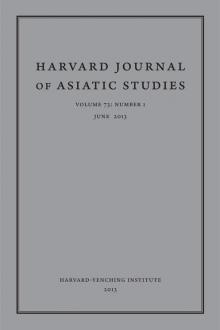June 2013
Articles
Rites and Rule
Kiyomori at Itsukushima and Fukuhara
Heather Blair offers a correction to the politically centered paradigm for early medieval history. English-language historians have generally focused on the political and military history of the Genpei War (1180-1185), attending to the war’s victors, the Minamoto, while defining Taira no Kiyomori (1118-1181) primarily as failed warrior. Placing Kiyomori in the context of Heian court culture, Blair instead argues that ritual played an important role in the Taira family’s rise. Formulating a new theoretical model of ritual regimes, she first outlines the regime piloted by Retired Emperor Go-Shirakawa (1127-1192), with whom Kiyomori interacted constantly, and then examines Kiyomori’s ritual activities and their relation to his political career. Through a close analysis of Kiyomori’s construction of a set of signature sites, rites, and texts—at both the ocean-side shrine Itsukushima and Fukuhara—Blair makes her case for the importance of ritual in twelfth-century politics.
Cooperation and Tension
Revisiting Local Activism in the Southern Song Dynasty
Sukhee Lee takes as his point of departure a conundrum: although the local elites of Mingzhou prefecture won glowing praise for their role in building community solidarity, the financial support for their activities actually often came from the state. Because Mingzhou local activism was clearly not a response to a retreating state, Lee focuses on the complex interplay between the state and local elites, especially by examining their sponsorship of official schools, the community drinking ceremony, charitable estates, and the charitable service. He demonstrates that the state and local elites had convergent interests, but he also shows that they differed both in their commitment to local projects and in their visions of elite social responsibility. Two contending but complementary visions, rather than the complete triumph of one over the other, was vital to the success of local activism of Mingzhou.
